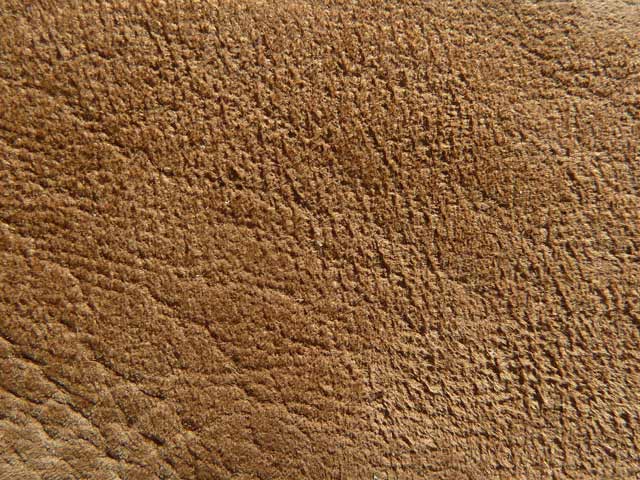How to differentiate Nubuck from Calfskin and Suede?

A question often asked in stores, and one whose answer is often misunderstood, here's how to distinguish between "velvet" leather and "nubuck" or even "suede."
Besides their soft, peach-skin-like appearance, these types of leather (called suede by the English) differ in their manufacturing process. We'll explain the differences between them.
What is suede calfskin ?
To understand what suede calfskin is, let's take a moment to examine the leather finishing process. After tanning, the hide (a putrescible, wet material) becomes leather (a rot-proof, dry material) by binding tanning agents.
The hide, now leather, is split in two (splitting), creating two distinct parts: the leather and the crust.

Beautiful subtle Patina by Malfroid. Source: malfroid.com Different Steps of the Patina process at Berluti. Source: berluti.com
We'll focus on the leather side, as it's the finest and the one used in high-end leather. On this type of leather, the part where the epidermis and hair follicle (animal hair) were located is called the grain side. This is also referred to as the "grain side." The back, on the other hand, is called the "flesh side" because it was in contact with the crust before the splitting process.
The velvet is part of the leather; it is simply the flesh side.

Figure 2. Section of a mammal skin: Leather in all its States by Marie-Noëlle de Cagny (2011)
Suede calfskin, unlike nubuck, is usually brushed, which gives it a more textured, less fine appearance. Small filaments can be seen that are characteristic of the leather and are due to its treatment.

Figure 3. Macro of suede calfskin on colourstock.fr
What is nubuck ?
Nubuck (like suede) is not an animal as some might think! Unlike velvet, the material called nubuck comes from the upper part of the leather, the grain side.
This layer is finely sanded with an abrasive material (fine sandpaper if this operation is done manually) to achieve this unique appearance.

Figure 4. Nubuck macro on colourstock.fr
This sanding process is delicate and cannot hide any imperfections in the leather. Therefore, a very high-quality hide is required to create genuine nubuck leather.
The thickness of the hide is a very good indicator of quality, because, like more common smooth leather, nubuck comes in several grades.
And what about suede ?
Suede leather, on the other hand, is a generic term rooted in vocabulary but is actually a linguistic approximation: it simply refers to a leather with a textured appearance, in reference to the appearance of the animal's fur.
Indeed, suede is a protected species and its leather has long since fallen out of use. The terms suede and suede are therefore quite broad and refer to two types of leather: velvet or nubuck..

Figure 5. Large-bladed fallow deer (chasseetdécouvertes.com)
“Is it fragile ?!”: How to care for your suede shoes ?
Contrary to popular belief, suede is very easy to care for and is not fragile. It is also weather-resistant; however, it should be dried at room temperature on shoe trees, not near a heat source.
To care for it, you will first need to dust the shoe with a shoe scraper to remove as much dirt as possible. Then, you will need to "de-polish" the leather with a brass brush.

Figure 6. Sapphire Brass Brush
Indeed, the bristles can become matted and smooth, taking on a blackish appearance. A crepe brush (more aggressive) can be used in addition if the brass brush isn't enough. It should be used locally and not on the entire shoe. Finally, protect your shoe with a waterproofing product, such as Saphir's Super Invulner.
Once a month, you can also thoroughly clean your shoe using a cleaner and renovator.
In summary
- Suede calfskin is part of the leather section and is on the flesh side
-
Nubuk is also part of the leather section but is on the grain side -
Suede is a linguistic approximation -
Don't be afraid of suede calfskin ! It's easy to care for
Originally published online at https://www.septiemelargeur.fr/
